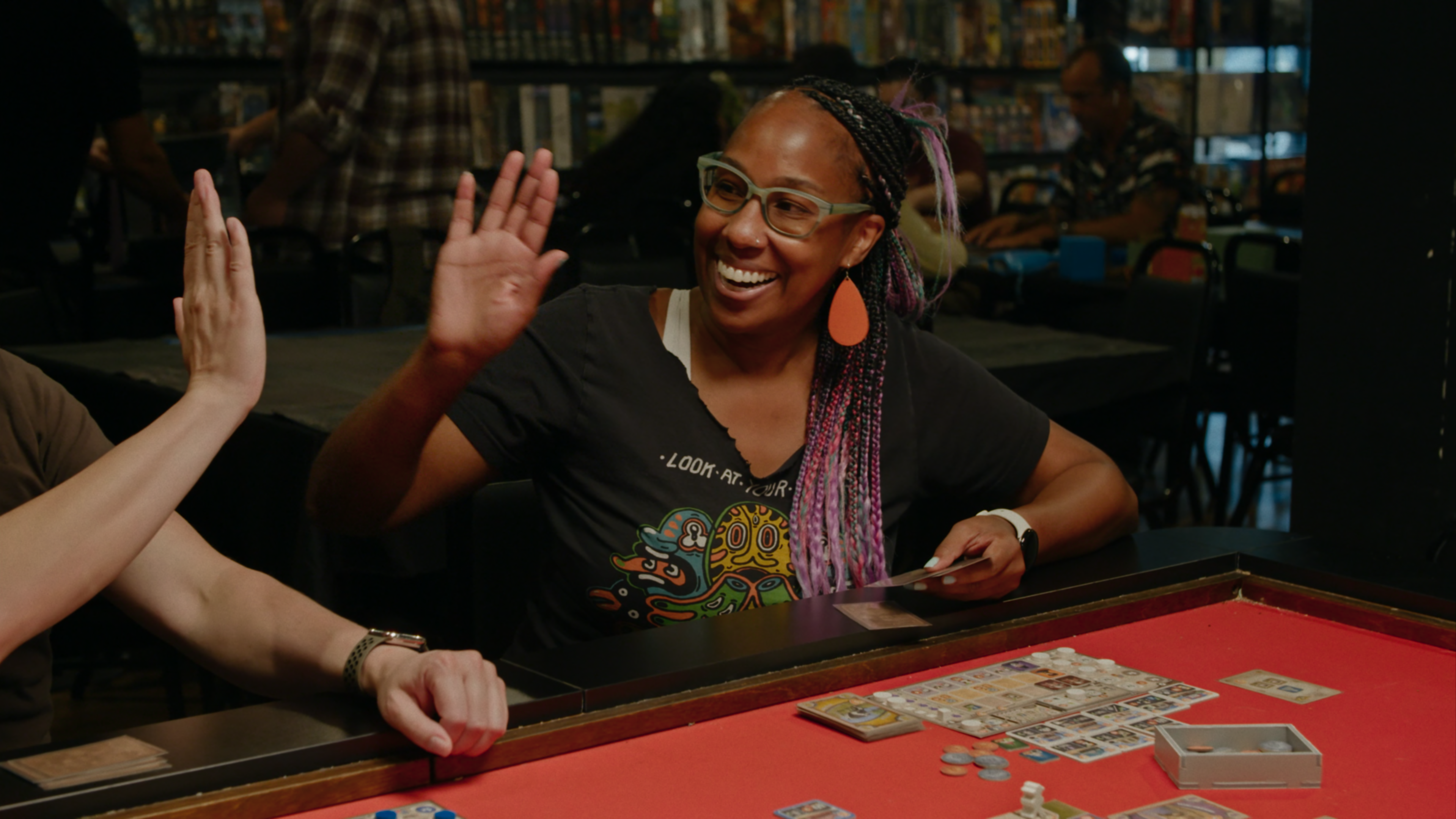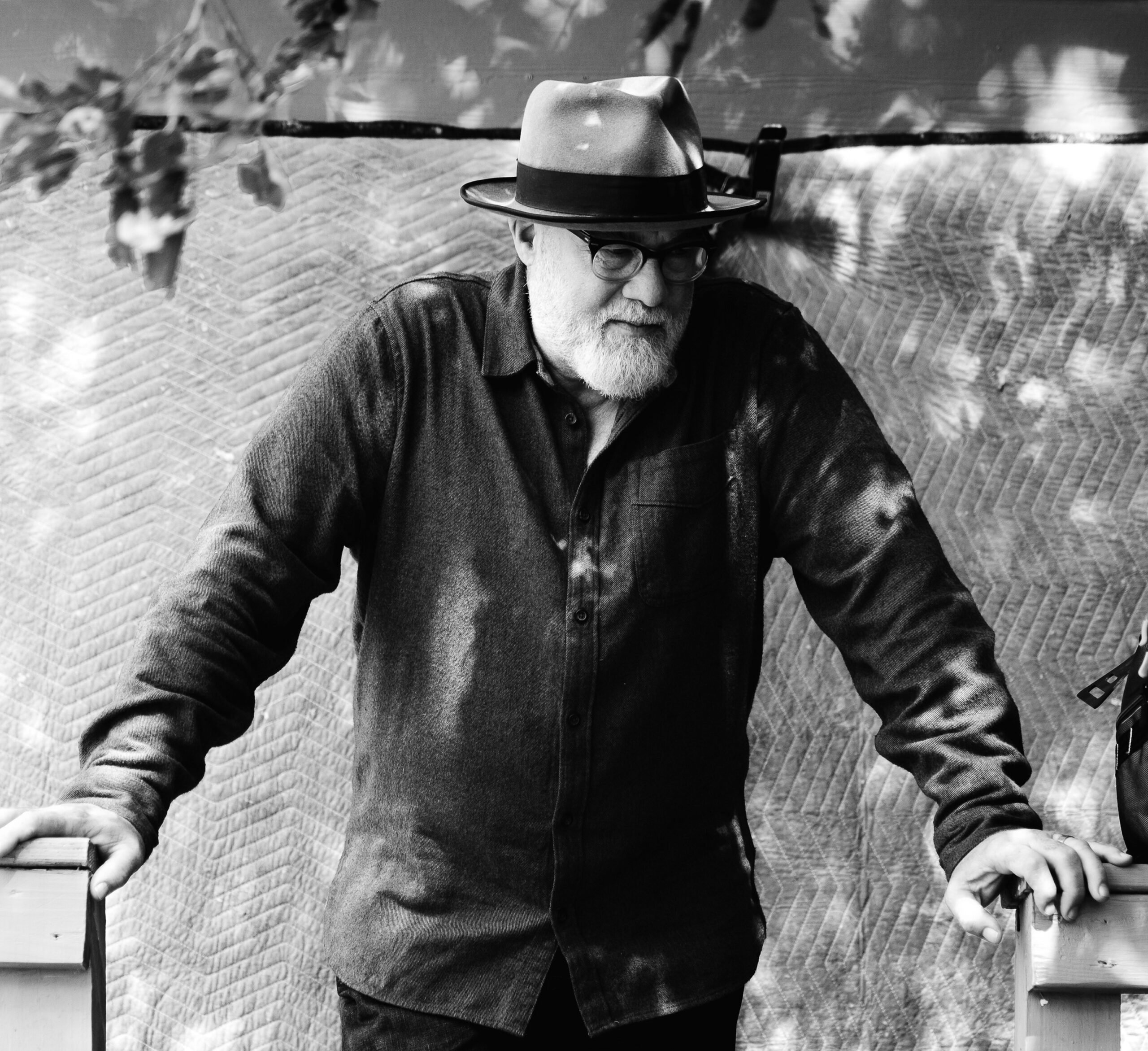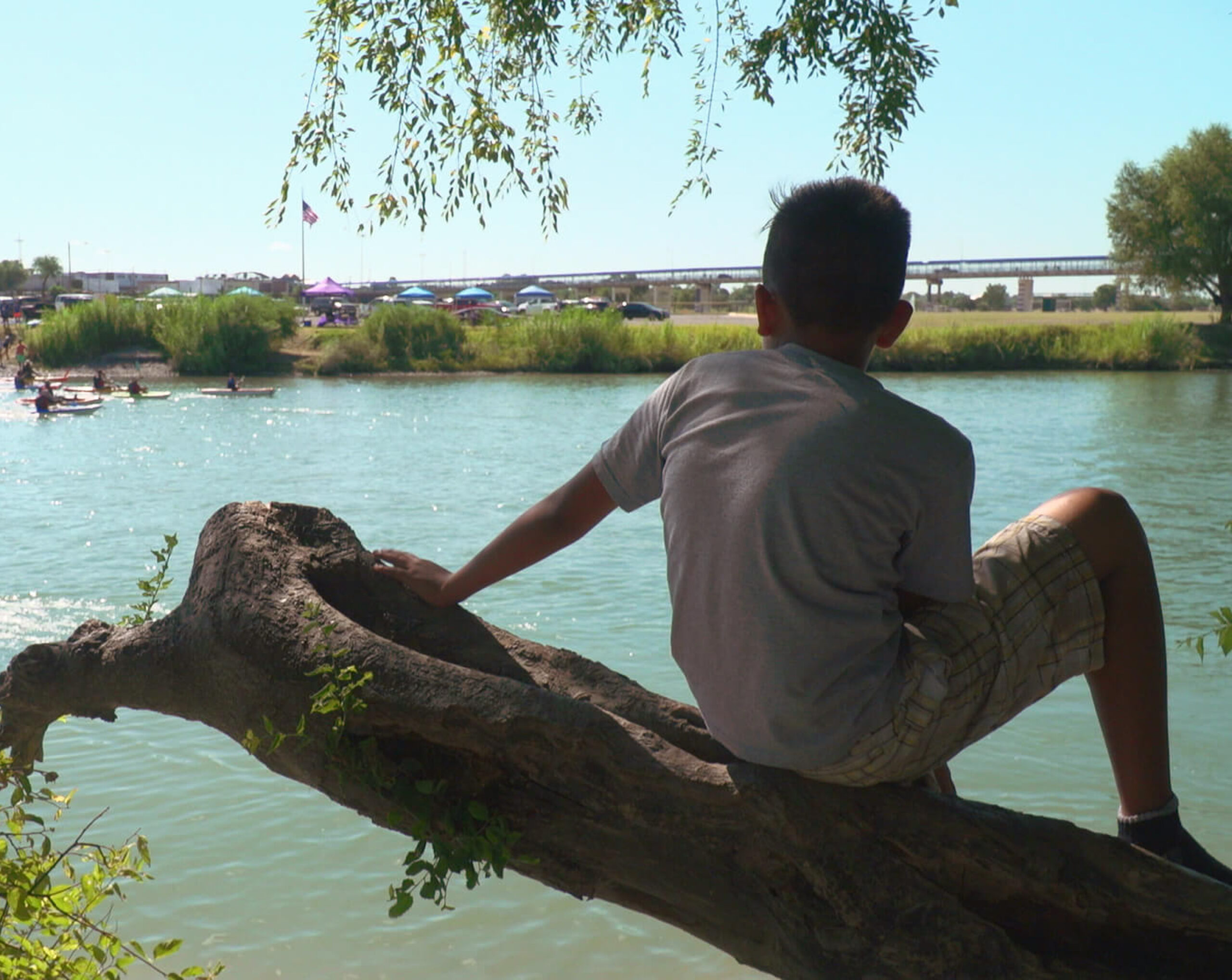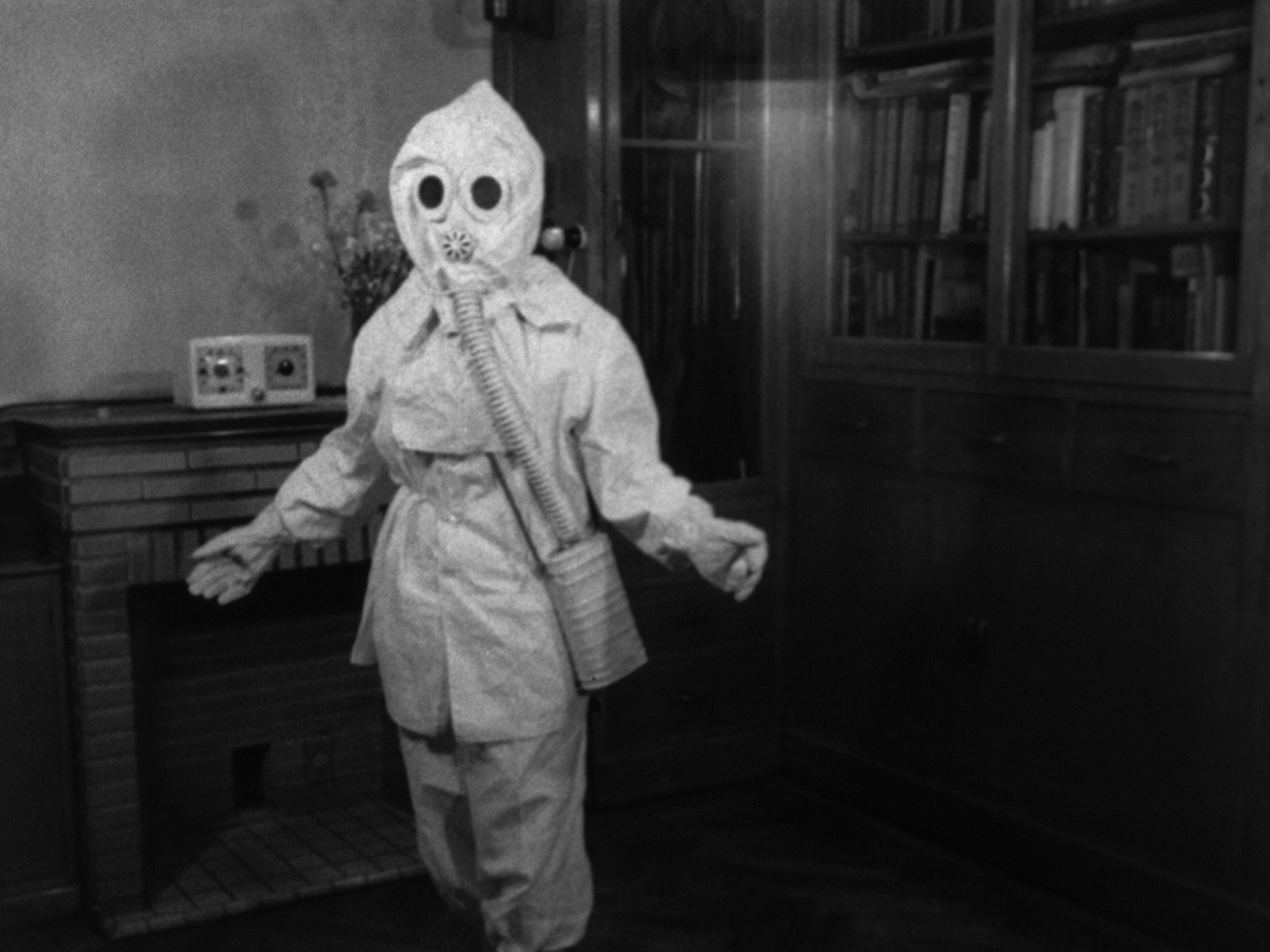
In ‘The Atomic Cafe,’ U.S. Cold War Propaganda Comes Out of the Bunkers for the Trump Era
Screening at SXSW on Saturday, the film's Cold War-era footage never feels distant — perhaps because both careless stewardship of the bomb and surreal official propaganda seem to be making a comeback.
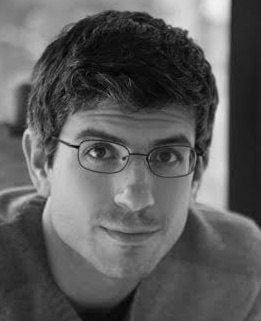
Above: Woman in fallout suit (still from The Atomic Cafe).
When Jayne Loader was a child growing up in 1950s and ’60s Fort Worth, she lived across the street from E.O. “Soapy” Gillam, the “bomb shelter king of North Texas.” This was the height of the Cold War, when a man like Gillam could do good business catering to nuclear anxieties — and to the bizarre, morbid advice of U.S. government propaganda films that taught kids how to “duck and cover” and warned their parents to build bunkers in case a bomb should detonate in their neighborhood.
Inane as such gestures may have been in the face of world-destroying nuclear arsenals, Loader and her friends adjusted. Her friend, Gillam’s daughter, used her family’s bunker as a clubhouse and secret party spot. “My memories of the bomb shelter are not just of a place you’d go for a nuclear war, but also a place where you’d go to get away from your parents and make out, play spin the bottle and steal your parents’ liquor,” Loader says.
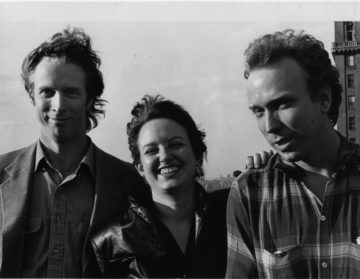
Decades later, involved in the anti-nuclear movement in New York City, Loader felt compelled to revisit the strange mix of Eisenhower-era exuberance and post-Hiroshima horror that formed the backdrop to her childhood. The result is The Atomic Cafe, a seminal found-footage documentary co-directed by Loader along with brothers Kevin and Pierce Rafferty.
The film is unusual in format, stitching together various archival sources vérité-style with no voiceover or title cards. Much like those who came of age in the decades after World War II, viewers of The Atomic Cafe are left to their own devices to find an overall narrative in the various bits of government films, TV advertisements and news interviews included. Only through subtle editing choices do the filmmakers guide us in making sense of the senselessness of the bomb and our country’s early, troubling stewardship of it.
Last year, the U.S. Library of Congress added The Atomic Cafe to the National Film Registry, an honor reserved for 25 “culturally, historically, or aesthetically significant films” each year. This special designation came with funds for a sparkling new restoration, which will play to an audience for the first time Saturday night at SXSW.
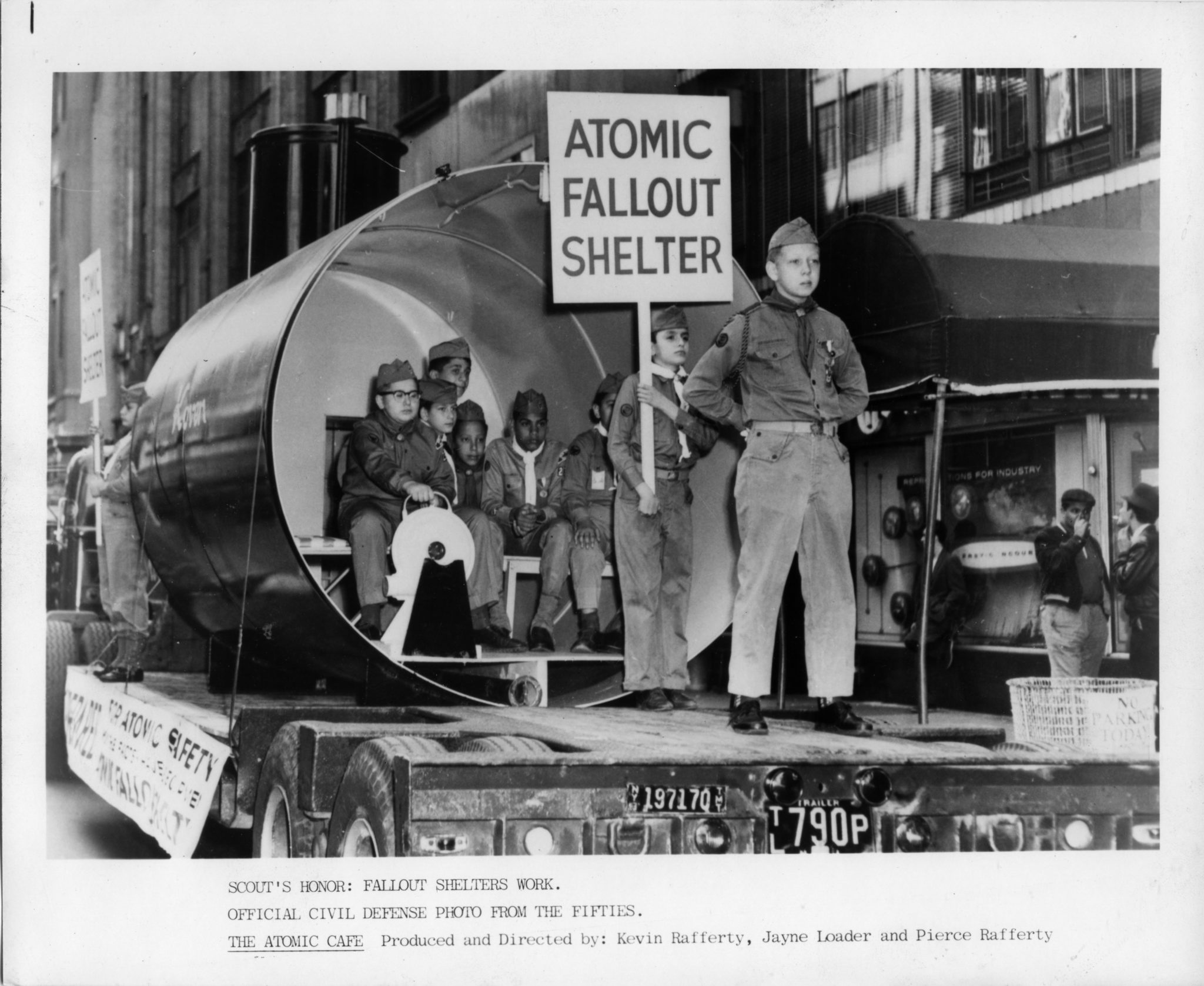
It’s no surprise that the preservationists at the Library of Congress would have a soft spot for The Atomic Cafe — the film is itself a powerful example of the film archivist’s work. Loader and her partners spent years sifting through archives at various government agencies involved in Cold War propaganda, in addition to television libraries. Much of this footage likely never would have reached the eyes of the general public if not for their research.
Some of what they found brought to light deeply troubling actions by the U.S. government and attitudes expressed in the U.S. media in the early nuclear era. The most difficult section of The Atomic Cafe to watch deals with Hiroshima and Nagasaki. Gruesome images of victims, widely disseminated now, would not have been seen before by most audiences in the early 1980s, Loader says. While the screen shows images of charred bodies, we hear audio from an American radio comedy show: “We flew over Hiroshima. … It was a shambles. It looked like Ebbets Field after a double-header with the Giants! (Laugh track.)“
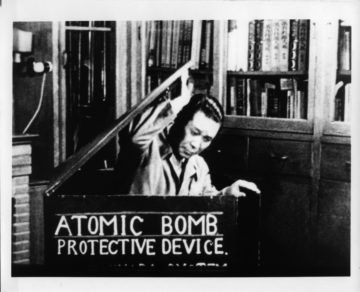
The film’s implicit critiques extend far beyond the complex wartime decisions of August 1945. For instance, American viewers in the 1950s might have watched a news program on nuclear testing at Bikini Atoll without fully grasping the consequences for islanders whose bodies and food sources were poisoned by the radiation. By The Atomic Cafe‘s release in the 1980s, the injustice was clearer, and even more so today.
Along similar lines, one of the most important finds in The Atomic Cafe is a military film showing U.S. soldiers being intentionally exposed to nuclear radiation at a 1957 detonation at the Nevada Proving Grounds, in an exercise jocularly code-named Troop Test Smoky. On film, we see soldiers briefed on their maneuvers: “Watched from a safe distance, this explosion is one of the most beautiful sights ever seen by man.” Then, on the day of the blast, we see them cheerfully loaded into trenches at varying distances from the detonation, outfitted with dosimeters to test their radiation exposure. It’s clear that the soldiers are being used as guinea pigs.
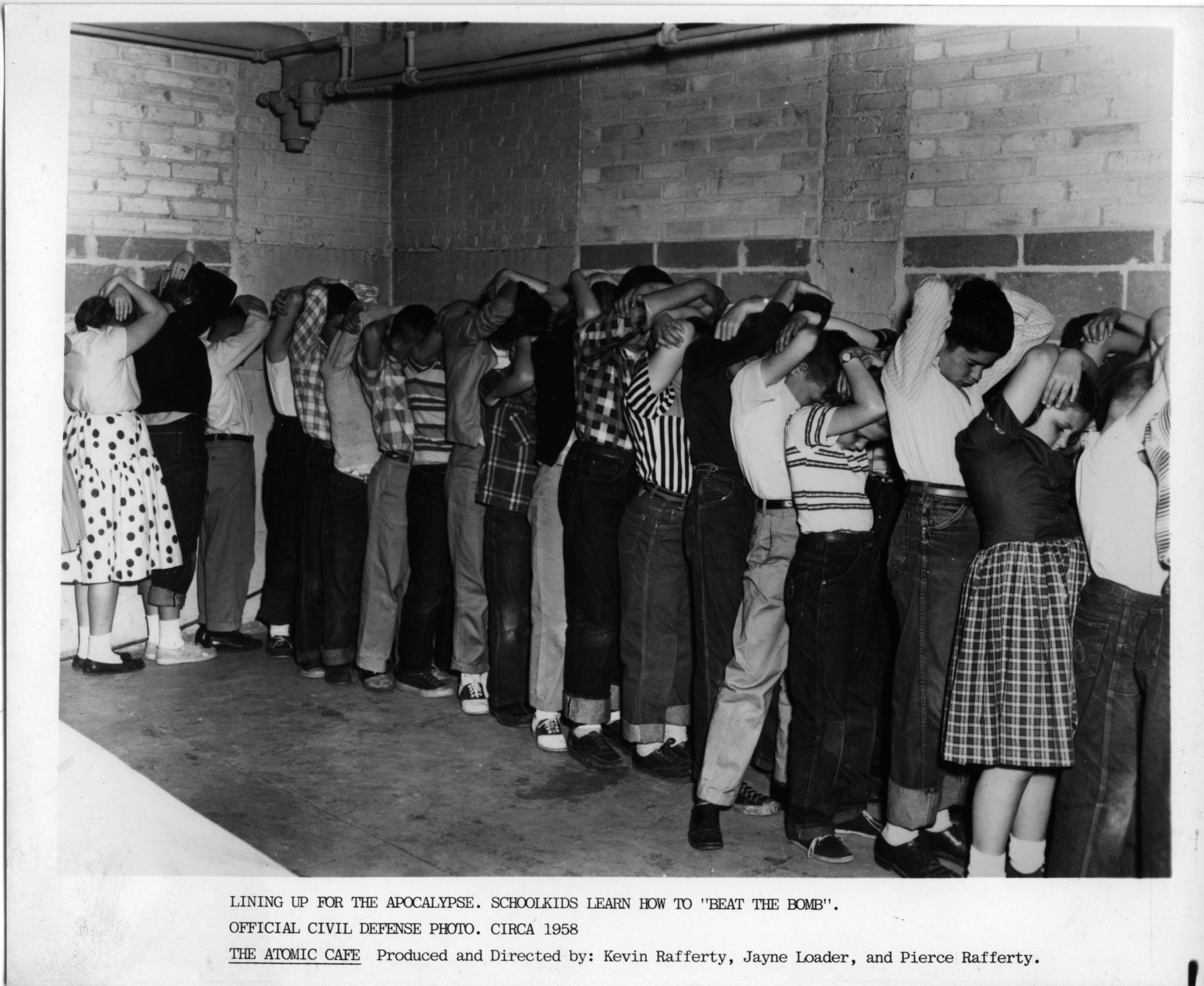
Loader and one of her co-directors uncovered the Smoky film in a library at an Air Force base in Pennsylvania. “We had to kind of go, ‘Mmhm, oh, that’s interesting,’ pretending we weren’t excited,” Loader says. “Then we put in the reels for reproduction, and they gave them to us. We were in shock.” These days, Loader adds, the military makes such archives much less accessible, and any similar research would require Freedom of Information Act requests.
As a viewing experience, however, The Atomic Cafe is much more than the sum of its archival parts. Its deepest impact is not as advocacy or preservation, but as an immersion in the sinister yet silly, weird yet all-too-familiar world of postwar nuclear Americana. It never feels too distant, despite the years, perhaps because both careless stewardship of the bomb and surreal official propaganda seem to be making a comeback.
“I think the film will strike a chord with people living through the Trump period, having to hear about, ‘My button is bigger than your button,’” Loader says. “People are frightened. It seems like a constant theme for the past year, fear of nuclear war.”
